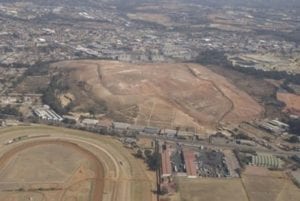Recent reports from the City of Johannesburg have revealed that the fast expanse of the city will not be able to hide its several landfill sites by as little as nine years from now.
The shortage of space is so severe that the South African Local Government Association (SALGA) is appealing to municipalities in Gauteng and other parts of the country to seek alternative and innovative ways of dealing with the looming crisis. City of Joburg spokesperson, Jacky Mashapu, says unless Johannesburg residents alter their attitude around the issue of disposing of waste, “the effect will be that there will be no more space for landfills by 2023”. “South Africa generates about 59 million tons of general waste, with nearly 90% disposed of through land filling,” explains SALGA’s waste management specialist, Marvelous Nengovhela. Gauteng’s municipalities (Tshwane, Ekurhuleni and Johannesburg) recently met to discuss ways to deal with their waste management crisis – which is being fuelled by a steady urban migration. Mashapu outlines that the city collects 1,8 million tons of rubbish annually, including 244 000 tons from illegal dumping areas and 1 779 t comprising general street litter.“Each ton of waste dumped generates 1.79 ton of CO2 and methane as it decomposes. Pikitup has developed a waste minimisation strategy to this. The strategy is geared to steer away from traditional methods, where 93% of waste is disposed of at landfills, to one where 7% of waste is dumped,” he explains.
Nengovhela says strict conditions are in place to develop new landfills but municipalities have to devise alternative waste disposal systems themselves. “There are stringent conditions in developing new landfill sites due to environmental concerns and shortages of suitable land,” highlights Nengovhela. “Sustainable waste management requires a joint effort from all role-players – including communities,” he explains further.







